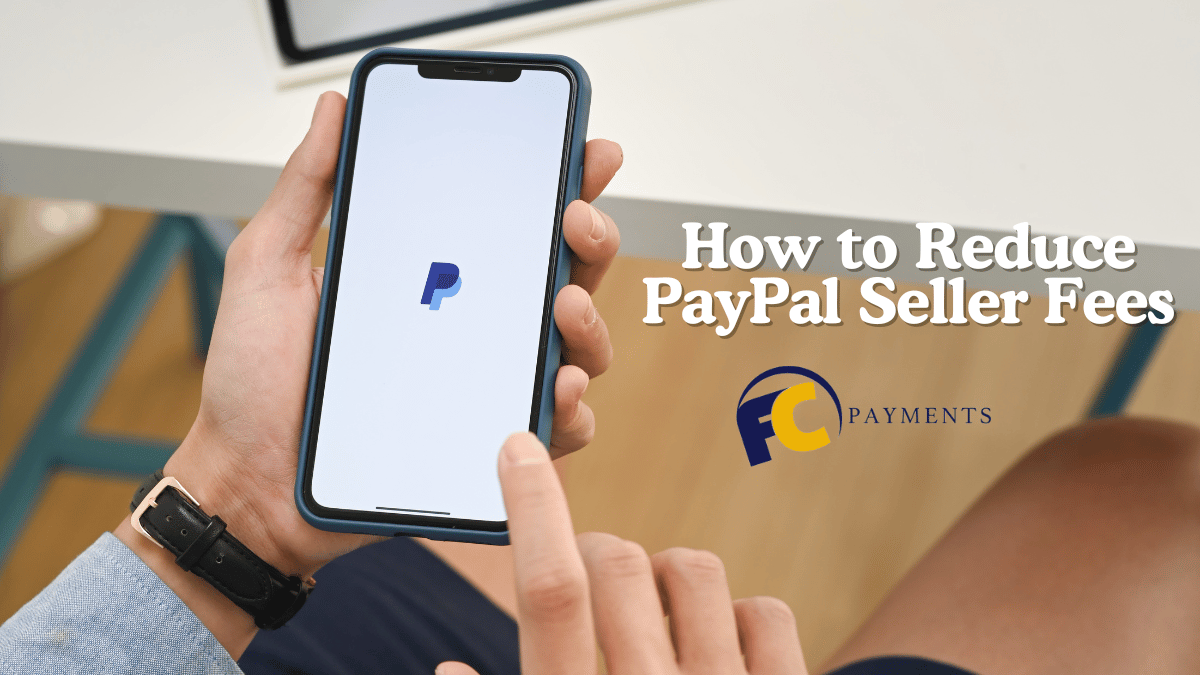
What Is PayPal’s Fee for Merchants? How to Reduce PayPal Seller Fees
As a merchant, understanding PayPal fees is crucial for managing your online business’s financial health. With various fees, such as transaction fees, monthly fees, and additional charges, it’s essential to stay informed and take advantage of strategies to reduce these costs. In this blog post, we’ll delve into an in-depth exploration of PayPal fees, provide tips for managing your merchant account, discuss alternative payment processing solutions, and more.
Short Summary
- Comprehensive overview of PayPal fees and strategies to reduce them.
- Fee calculators help merchants understand their costs, while tips and tricks can optimize a merchant account.
- Alternative payment processing solutions offer different pricing models for increased efficiency and profitability.
Understanding PayPal Fees for Merchants: A Comprehensive Overview
PayPal is a popular platform for online payments, but it’s essential to understand the different types of fees that merchants may encounter. There are transaction fees, which depend on factors such as country, currency, account type, and sales volume and are usually calculated as a percentage of the sale. Additionally, there are monthly fees and additional charges for specific services or features, such as advanced payment options or chargeback fees.
Calculating and managing your PayPal fees is crucial for keeping your online business profitable. By understanding these fees related to PayPal, merchants can make informed decisions about their pricing strategies and payment processing options. One helpful tool in this process is a PayPal fees calculator, which can assist merchants in estimating their costs and managing their expenses. To calculate PayPal fees, simply input the transaction details into the calculator and let it do the work for you.
It’s also important to be aware of strategies to avoid unnecessary PayPal fees. By choosing the right account type, optimizing your pricing strategy, and leveraging PayPal fee calculators, you can reduce your overall costs and improve your business’s bottom line, whether you are receiving money on your WordPress site or somewhere else online.
Transaction Fees: How They Work and What to Expect
PayPal transaction fees are charged based on factors such as:
- Country
- Currency
- Account type
- Sales volume
These fees are typically calculated as a percentage of the total sale amount plus a fixed fee. For example, for international transactions, PayPal charges an additional 1.50% on top of the domestic rate of 2.89%, resulting in a total of 4.39%.
Using a PayPal fee calculator can help you estimate your transaction fees for various types of payments and scenarios, including international transactions and currency conversions. These tools can be especially helpful for businesses that conduct a significant amount of international transactions, as they can provide a clear understanding of the fees involved in each transaction.
It’s essential to stay informed about the different transaction fees that apply to your PayPal account and understand how they can impact your business. By monitoring your transaction fees and adjusting your pricing strategy accordingly, you can minimize the impact of these fees on your bottom line.
Monthly Fees and Additional Charges
Apart from transaction fees, PayPal also imposes monthly fees and additional charges for certain services, including PayPal merchant fees. For example, advanced payment features like the PayPal Business Debit Mastercard come with corresponding monthly fees. Merchants should be aware of these fees and factor them into their overall cost calculations.
Additional charges may also apply in specific situations, such as chargeback fees and instant transfer fees. Chargeback fees are levied when a customer disputes a PayPal transaction, and the funds are returned to the customer. Instant transfer fees are charged for transferring funds instantaneously to a bank account, but they can be circumvented by scheduling the transfer of funds to occur several days prior to when they are required.
Understanding and managing these additional fees is crucial for maintaining a healthy financial status for your online business. By staying informed and implementing strategies to minimize or avoid these fees, you can reduce your overall PayPal costs and improve your bottom line.
PayPal Fee Calculator: Estimating Your Costs
PayPal fee calculators, such as Salecalc.com and FeeCalculator.net, can help merchants estimate their costs and manage their expenses when transferring funds to a linked bank account. By entering information about the transaction type, currency, and sales volume, these calculators can provide an accurate estimate of the fees involved.
Various elements, including the type of transaction, the currency employed, and the magnitude of sales, may impact the fee charged by PayPal. It’s essential to use a calculator that accounts for these factors to ensure accurate fee estimates. This is particularly important for businesses receiving international payments, as currency conversion fees can significantly impact overall costs.
In conclusion, PayPal fee calculators are valuable tools for merchants looking to estimate their fees and manage their expenses. By utilizing these calculators, businesses can make informed decisions about their pricing strategies and payment processing options, ultimately leading to reduced fees and improved profitability.
Managing Your Merchant PayPal Account: Tips and Tricks
One effective strategy for managing your merchant PayPal account is to upgrade to a business account, which may offer reduced fees and additional features that can assist with business growth. Additionally, optimizing your pricing strategy can help you minimize the impact of PayPal fees on your bottom line.
Another tip for managing your merchant account is to use accounting software, such as Synder, to eliminate duplicate entries, avoid errors and discrepancies, and ensure a smooth reconciliation process with your eligible linked bank account. By implementing these strategies, you can keep your PayPal account and PayPal accounts of your clients organized and efficient, allowing you to focus on growing your online business.
Reducing PayPal Fees: Strategies for Sellers
Sellers can minimize PayPal fees by taking advantage of discounted rates, selecting lower-cost payment methods, and negotiating with PayPal. To determine eligibility for discounted rates, merchants can consult PayPal’s website or contact customer support. Qualifying nonprofits, for example, are eligible for discounted rates for processing online purchases.
Another strategy to avoid PayPal fees is to choose lower-cost payment methods. For instance, using a PayPal business debit card enables merchants to access their PayPal account funds directly, potentially avoiding fees. By carefully considering their payment options, sellers can minimize fees and maximize their profits.
In conclusion, by implementing the strategies outlined in this section, sellers can effectively reduce their PayPal fees and save money. This can lead to increased profitability and business growth, making it well worth the effort to understand and manage these fees.
Alternatives to PayPal: Other Payment Processing Solutions
While PayPal is a popular online payment platform, there are alternative payment processing solutions that merchants may consider, such as Square, Stripe, and Helcim. These providers offer different pricing models, features, and customer support options, making it essential to evaluate your business’s needs before selecting a solution.
When considering alternatives to PayPal, it’s important to weigh factors beyond transaction fees, such as accepted payment methods, security features, and customer support. For example, Helcim provides more cost-effective payment processing and increased account security compared to PayPal.
By exploring alternative payment processing solutions, merchants can ensure they are utilizing the best platform for their specific business needs. This can lead to improved efficiency, reduced fees, and, ultimately, increased profitability.
International Transactions: Navigating Fees and Currency Conversions
For businesses that conduct international transactions, it’s crucial to understand the transaction fee associated with these transactions and how to navigate currency conversions. International transaction fees are typically higher than domestic transaction fees, with PayPal charging an additional 1.50% on top of the domestic rate, resulting in a total of 4.39%.
Currency conversion fees can also impact the overall cost of international transactions. PayPal imposes a currency conversion fee of either 3% or 4%, depending on the type of transaction. To manage these fees effectively, merchants can use PayPal’s currency conversion tools to convert currencies quickly and easily, as well as to view the current exchange rate for any currency.
By understanding the fees associated with international transactions and utilizing currency conversion tools, merchants can effectively manage their international business operations and minimize the impact of fees on their bottom line.
PayPal and Cryptocurrency: Understanding the Fees
As cryptocurrencies become more mainstream, understanding the fees associated with buying and selling cryptocurrencies through PayPal is essential. When using PayPal to purchase or sell cryptocurrencies, an exchange rate, including a marked-up spread, will be applied.
In addition to the marked-up spread, PayPal may offer limited-time fee discounts or rebates on cryptocurrency purchases that meet specific criteria. This can potentially save merchants money on their cryptocurrency transactions and positively impact their PayPal balance, especially when using PayPal payments for PayPal payouts and managing their PayPal transactions.
By staying informed about the fees associated with buying and selling cryptocurrencies through PayPal, merchants can make informed decisions about their investment strategies and minimize the impact of fees on their overall profits.
PayPal for High-Risk Businesses: What You Need to Know
PayPal has specific policies for high-risk businesses, which may result in account termination or declined payment processing. To ensure compliance and minimize risks, high-risk businesses should thoroughly investigate PayPal’s policies and guidelines.
If PayPal is not a suitable option for a high-risk business, alternative payment processors, such as Stripe, Square, and Authorize.net, may be more appropriate. These providers offer different features, pricing models, and support options, which may better suit the needs of high-risk businesses.
By understanding PayPal’s policies for high-risk businesses and considering alternative payment processing solutions, merchants in this category can effectively manage their online transactions and minimize potential risks.
First Card Payments
Using PayPal for first-time credit and debit card payments offers both benefits and drawbacks for merchants. The primary advantage is convenience, as PayPal is a secure and user-friendly platform that enables quick and secure payments. Additionally, PayPal provides buyer protection, which can help safeguard against fraudulent purchases.
However, the primary disadvantage of using PayPal for initial debit card payments is the associated fees. PayPal charges a fee for each transaction, which can accumulate with extended use. Additionally, PayPal may impose additional fees for certain services, like international payments.
By carefully weighing the advantages and disadvantages of using PayPal for first-time card payments, merchants can make informed decisions about whether this platform is suitable for their specific needs.
It’s clear that businesses, especially those in high-risk industries, face challenging situations that require resilience and adaptability to overcome. In such situations, it’s vital to make informed decisions and engage in strategic planning to turn the tide and set sail toward success once again, even when sorting high fees associated with PayPal.
To continue their journey in the e-commerce sea, businesses can leverage services like First Card Payments, which can help them overcome the challenges that come their way. With such services in place, the journey of online commerce continues, and businesses can change their course, rather than ending at a PayPal account suspension.
It’s important to note that businesses should also focus on building a robust and diversified payment system to mitigate the impact of any future payment processor disruptions. By doing so, businesses can ensure that they’re not overly reliant on a single payment processor and can continue to operate smoothly, even in challenging situations.
Summary
In this blog post, we’ve explored various aspects of PayPal fees for merchants, from understanding transaction fees and monthly fees to managing your merchant account and reducing fees with tailored strategies. We also discussed alternative payment processing solutions and provided tips for navigating international transactions and currency conversions.
Understanding and managing PayPal fees is crucial for the financial health of your online business. By staying informed, using helpful tools like PayPal fee calculators, and implementing strategies to minimize fees, you can improve your bottom line and drive your business toward greater success.
With this knowledge in hand, you’re now equipped to make informed decisions about your online payment processing, minimize the impact of fees, and, ultimately, fuel your business’s growth.
Frequently Asked Questions
How much does PayPal charge for fees?
PayPal charges a Goods and Services Fee of 2.9% + $0.30 per transaction.
How much is the PayPal fee for $100?
The most common PayPal fee of 3.49% + $0.49 applies to a $100 transaction, resulting in a fee of $3.98 and total money received after fees of $96.02.
How do I avoid PayPal fees?
Set up a business account, request to be paid as a “Friend or Family”, apply for lower fees, deduct PayPal fees from your tax returns, or opt for an alternative payment provider – all these solutions can help you avoid paying PayPal fees.
These solutions can help you save money and time while still allowing you to accept payments from customers. With the right approach, you can make sure that you don’t have to pay PayPal fees.
Why is PayPal charging me for friends and family?
PayPal is charging you for friends and family payments as international payments can incur a transaction fee equal to 5% of the send amount (up to $4.99 USD).
This fee is applied to all payments sent to recipients outside of the United States. The fee is calculated based on the currency of the payment and the exchange rate at the time of the transaction.
It is important to note that this fee is not refundable.
What types of fees do merchants encounter with PayPal?
Merchants using PayPal may incur transaction fees, monthly fees, and additional charges for specific services or features.
These fees vary depending on the type of account and the services used. For example, merchants with a PayPal Business account may be charged a flat fee for each transaction, while merchants with a PayPal Premier account may be charged a flat fee for each transaction.
I am passionate about delivering results and helping my clients succeed. With my expertise in SEO, branding, and marketing, I lead the agency’s efforts to create and implement effective strategies that drive business growth. Our all-inclusive approach sets us apart from other digital media companies and ensures that our clients receive the full range of services they need for online success. If you can think of it, we can build it!
Zulu Shack Creative team members thrive on momentum. Like Zulu warriors, we strive to spearhead your idea with speed and quality.
When I’m not helping my team implement new digital marketing strategies, I enjoy playing music, hosting poker nights, reading Stephen King novels, and spending time with my wife and baby daughter.
No Comments
Sorry, the comment form is closed at this time.







